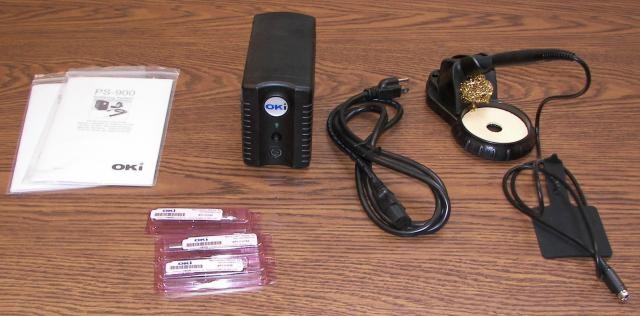Here is a list of tricks to help you overcome the issues that can arise while hand soldering silicon-based solar cells (and other applications as well). Some of these ideas are obvious for most, but all the suggestions can help you form a better solder joint - and build a better final product:
1) Use the correct soldering tip. I’ve made the mistake of using an inappropriate solder tip before, and so have many of my customers. It’s a frustrating problem you will only let happen to you once: everything is set up perfectly but nothing will melt, until you notice the solder tip is not the correct size or shape. This has happened to many of my customers who were initially using cone point soldering tips when they were working with 2mm wide solder coated tabbing ribbon. Simply changing the tip to a 2mm wide chisel point made all the difference, and promoted soldering readily. Why such a big difference in performance? The chisel tip allows heat to flow across the ribbon, instead of only heating a single point. More heat flow = more heat in your solder joint.
2) Pre-tin the soldering iron. Just as an appropriately sized soldering tip will distribute heat across the soldering surface, a bit of molten alloy can help create a thermal interface to maximize heat transfer. Remember to melt a small amount of solder onto the tip of your iron before soldering, and be sure it’s the same alloy you are soldering with. (Leave the custom alloying to us ;)
3) Consider the alloy you are soldering. All the heat your typical soldering iron can produce will not be enough to melt some of the highest temperature alloys. Be sure to have a good understanding of the alloy you have selected. In some cases with low-temperature alloys (like bismuth or indium alloys), excessive soldering temperature can de-wet the alloy and char low temperature fluxes.
4) Use the correct flux. Fluxes are quite different, I’ve spent my entire soldering career trying to get that point across. There are fluxes for high temperatures or low temperatures, cleaning with water or not cleaning at all. There are specialty fluxes for specialty alloys and there are fluxes for different soldering surfaces. Use the correct flux. If you don’t know what the best flux for the application is - just ask; that’s what I am here for.
5) Use a bottom side heater. Silicon is known to pull heat away – that c-Si solar cell that needs to be soldered is a heatsink! Some solder equipment vendors also provide underside heating pads to help prevent excessive heat loss.
6) Keep your soldering iron clean. That black crud that builds up on your soldering iron tip, it’s not helping you form a good solder joint. Those oxides and charred flux residues can easily be removed by wiping the hot iron across the wet sponge (that should be at your soldering station). A clean tip will lead to better heat transfer, and it will make the fluxes you use more effective.
This is the soldering station I use, it’s a PS-900 supplied by OK International. Just about any soldering iron will work, but they won’t all work as well – or come with as good support.
I’m still learning all the tricks to hand soldering, so feel free to share any you have learned over the years!
~Jim



